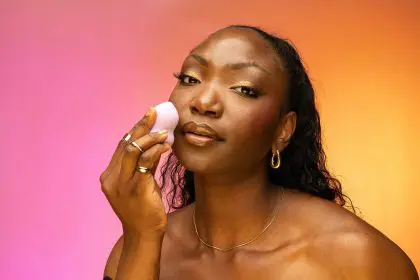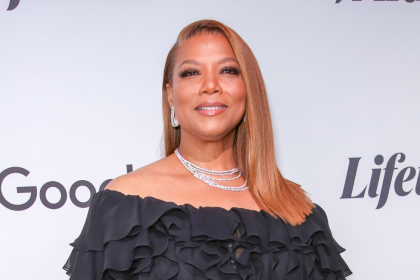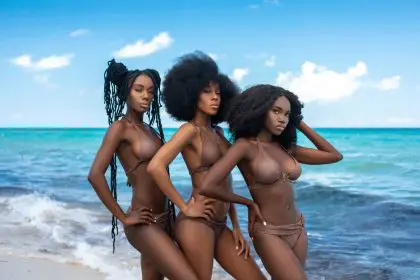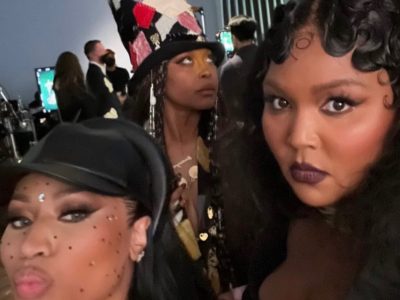Fashion evolution happens naturally as women enter their forties and beyond. The pieces that once felt exciting and trendy often lose their appeal as personal style becomes more refined and intentional. Women in this age group increasingly prioritize quality over quantity, comfort over conformity, and timeless elegance over fleeting trends.
The shift isn’t about following rigid rules or abandoning fun in fashion. Instead, it reflects a deeper understanding of what works for individual body types, lifestyles, and personal aesthetics. This natural progression leads many stylish women to eliminate certain items from their wardrobes entirely.
1. Ultra-low-rise jeans and pants
The return of Y2K fashion has brought back many nostalgic pieces, but ultra-low-rise bottoms remain firmly in the past for most women over 40. These pants, which sit several inches below the natural waistline, create unflattering proportions and offer minimal coverage when sitting or bending.
Women in their forties typically prefer mid-rise or high-waisted options that provide better support and create a more polished silhouette. The higher waistline helps define the waist and creates a longer leg line, while offering the comfort and confidence that comes with proper coverage.
2. Extremely cropped tops and belly-baring styles
While crop tops have made a major comeback, the ultra-short versions that barely cover the ribcage don’t appeal to most style-conscious women over
. These pieces often feel too youthful and can be challenging to style appropriately for various occasions.
The preference shifts toward longer hemlines that hit at the natural waist or just below. This creates a more sophisticated look while still allowing for trendy silhouettes and proportions that feel age-appropriate and confident.
3. Logo-heavy designer pieces
The desire to display brand names prominently tends to diminish as women mature in their style journey. Pieces covered in obvious logos or brand names often feel less sophisticated and more about status than personal style.
Instead, the focus moves toward well-made pieces with subtle or no branding. This approach allows the quality of the garment and the wearer’s personal style to take center stage rather than advertising specific brands.
4. Extremely tight bodycon dresses
While fitted clothing can be flattering and appropriate at any age, the ultra-tight bodycon dresses that leave nothing to the imagination often fall out of favor. These pieces require specific undergarments and can be uncomfortable for extended wear.
The preference evolves toward dresses with structure and tailoring that create beautiful silhouettes without being restrictive. A-line, fit-and-flare, and wrap styles often become go-to choices for their versatility and flattering nature.
5. Fast fashion statement pieces
The appeal of trendy, inexpensive pieces designed to last only a season significantly decreases as women prioritize quality and sustainability. These items often lack the construction and materials needed for a polished appearance.
Investment in fewer, higher-quality pieces becomes the preferred approach. This shift supports both personal style goals and environmental consciousness while creating a more cohesive and refined wardrobe.
6. Overly embellished or busy patterns
Clothing with excessive sequins, beading, or extremely busy prints often feels overwhelming and less versatile as style preferences mature. These pieces can dominate an outfit and limit styling options.
The move toward cleaner lines and more subtle details allows for greater versatility and timeless appeal. This doesn’t mean avoiding all patterns or embellishments, but rather choosing them more selectively and strategically.
7. Platform shoes and extreme heel heights
While statement shoes remain popular, extremely high platforms and sky-high heels often lose their appeal as comfort and practicality become priorities. These shoes can be difficult to walk in and may cause discomfort during extended wear.
The preference shifts toward well-constructed shoes with moderate heel heights that provide both style and comfort. Quality materials and proper support become more important than dramatic height or trendy details.
The evolution away from these items reflects a broader shift toward intentional dressing that prioritizes comfort, quality, and personal style over trends. This approach creates wardrobes that feel authentic and sustainable while maintaining sophistication and elegance.
This natural progression in fashion choices demonstrates how style confidence grows with age, leading to more thoughtful and purposeful wardrobe decisions that truly reflect individual personality and lifestyle needs.












